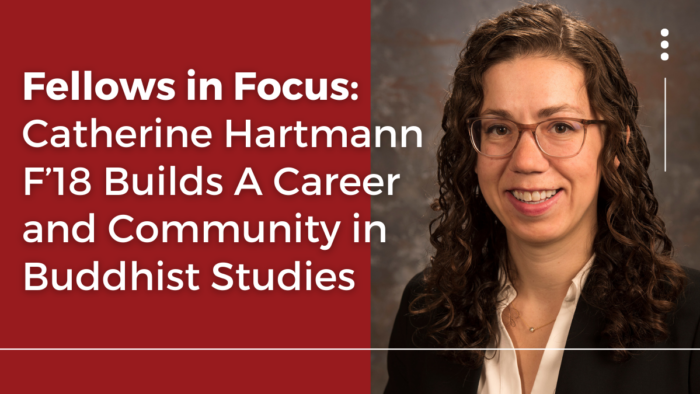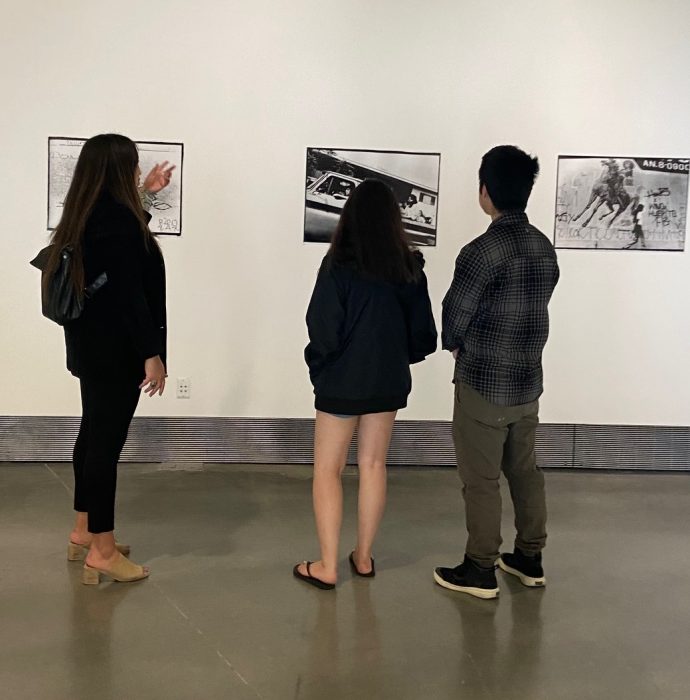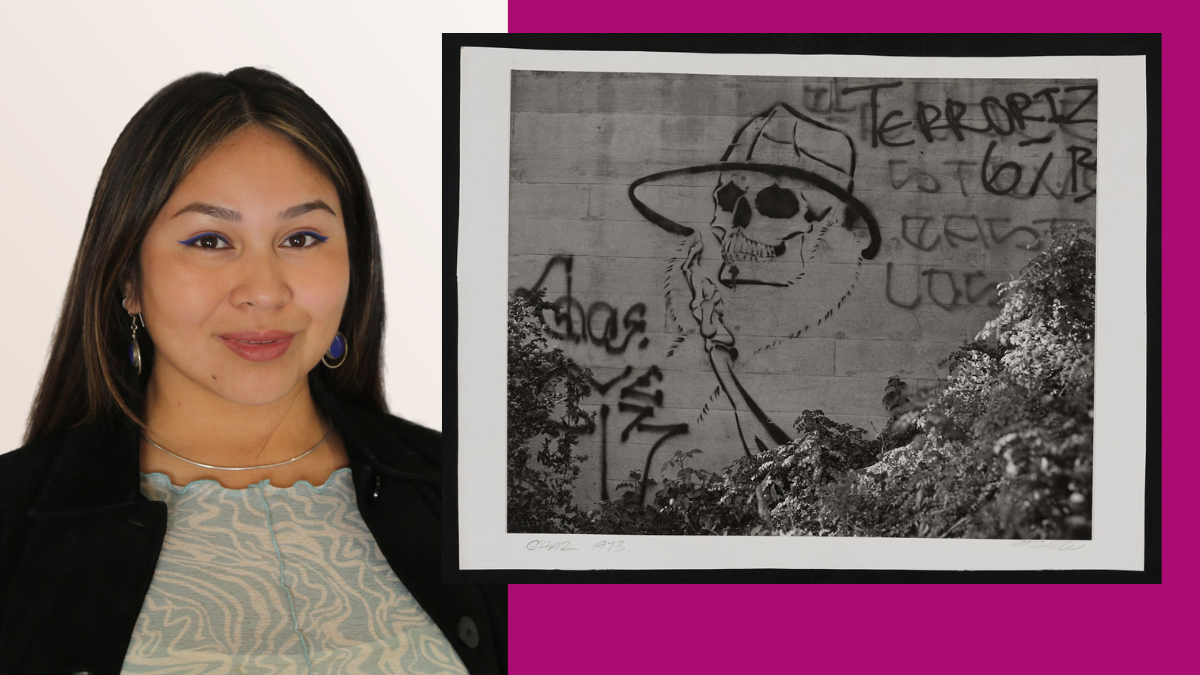


Re-reading Chaz’s art from 1969 to the present can provide the field of American art history with a new perspective on ruptures and continuities in Chicano art, as well as new methodologies to engage with in the discipline of art history.

Left: Philomena Lopez; Right: Photograph of Chaz Bojorquez’s pictographic tag “Senor Suerte,” 1973.
(Credit: Charles “Chaz” Bojórquez papers, 1956-2017. Archives of American Art, Smithsonian Institution.)
Chicano graffiti artist and painter Charles “Chaz” Bojorquez first produced Señor Suerte as a “tag” in 1969 using a stencil on a public wall. Not long after, Bojorquez reproduced it as a painting on canvas – but it also took on a life of its own as a popular tattoo throughout Los Angeles.
For Philomena Lopez, a 2021 Luce/ACLS Dissertation Fellow in American Art, the different formats of Señor Suerte represent the significance of Bojorquez’s work to separate communities: the art market, including museums and galleries, and subcultures within working-class Mexican Americans. In her dissertation, “Breaking Boundaries: The Multilayered Value of Charles Bojorquez’s Graffiti Art from 1969 to 2019,” Lopez explores Bojorquez’s impact on American art through visual analysis, oral history interviews, and archival research.
“I see this critical intervention as a necessary aid…in understanding the social value of art, visual language, and the power objects have to simultaneously operate in multiple contexts without losing authenticity and meaning,” said Lopez. “Re-reading Chaz’s art from 1969 to the present can provide the field of American art history with a new perspective on ruptures and continuities in Chicano art, as well as new methodologies to engage with in the discipline of art history.”


Re-reading Chaz’s art from 1969 to the present can provide the field of American art history with a new perspective on ruptures and continuities in Chicano art, as well as new methodologies to engage with in the discipline of art history.
Lopez is a doctoral candidate in art history, theory, and criticism at the University of California, San Diego, specializing in Latino and Latin American art. In 2021, she was awarded a Luce/ACLS Dissertation Fellowship in American Art, which supports graduate students pursuing research on the history of art and visual culture of the United States. The fellowships are made possible by the Henry Luce Foundation.
“My fellowship term is a major highlight of my overall graduate school experience because I had the time to solely focus on my research and writing,” Lopez said. “I was able to conduct meticulous research, such as reviewing hundreds of images, without any other commitments.”
The Luce/ACLS Fellowship enabled Lopez to visit archives including the California Ethnic and Multicultural Archives at the University of California, Santa Barbara and Archives of American Art in Washington, DC. She feels her work also benefitted from the feedback she received on her fellowship application.
“An anonymous reviewer provided constructive feedback and comments on my project which gave me a fresh perspective that I implemented in the work,” she noted. “This type of feedback by someone outside [my PhD] committee and my home institution made me feel supported by a larger academic community.”
Learn about all upcoming ACLS fellowship and grant opportunities.
Lopez will present her research findings on Thursday, February 16, 2023 at the College Art Association Annual Conference as part of the panel “Multiple ConTexts: Script that Marks.”
Since 1992, Luce/ACLS Dissertation Fellowships in American Art have supported more than 300 historians of American art, including some of the nation’s most distinguished college and university faculty, museum curators, and leaders in the cultural sector. Awards support graduate students in any stage of PhD dissertation research or writing for scholarship on a topic in the history of the visual arts of the United States, including all facets of Native American art.